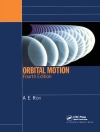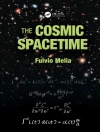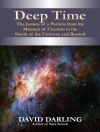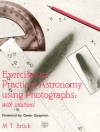Although there is a chance that certain planets may be habitable for life, the moons of planets might have even more to offer. The icy moons of Jupiter, Saturn, Uranus and Neptune have taught us important lessons about new volcanic forms—cryovolcanism—and the bizarre landscapes sculpted by those erupting geysers. Glaciers, ice mountains, and vast canyons mold the faces of these worlds of ice and thunder. Yet, many ice moons and dwarf planets, including Ceres and Pluto, are in fact sea worlds, hiding deep oceans beneath their ice crusts.
This book explores the frozen worlds beyond Mars, delving into the interior forces of migrating ice diapirs, seafloor volcanism and tidal friction, which help form the landscapes found above and biologically friendly environs buried below. It covers the latest research in the field and includes interviews with today’s foremost authorities, including astrobiologists Chris Mc Kay (NASA Ames), Ralph Lorenz (Johns Hopkins Applied Physics Laboratory) and Karl Mitchell (Jet Propulsion Laboratory). Original art by the author enhances the concepts explored in the text, recreating some of the most remarkable landscapes on icy planets and moons.
Spis treści
Chapter 1: Beginnings.- Chapter 2: Terrestrial Explorers Before the Space Age.- Chapter 3: A Survey through Lenses and Spacecraft Eyes.- Chapter 4: Ceres: The First Ice Dwarf Planet.- Chapter 5: The Silent Ice Moons: Callisto, Tethys, Dione, Iapetus, and Smaller Moons of the Outer Giants.- Chapter 6: Cryovolcanoes on Ice Moons.- Chapter 7: Sea Worlds.- Chapter 8: Titan.- Chapter 9: Pluto, “Ultima Thule, ” and the Lords of the Dark Realm. -Chapter 10: Potential Life Under the Ice: Planetary Porpoises and Cosmic Calamari. -Chapter 11: Future Explorations Robotic and Human.- Tables. -Index.
O autorze
Author/artist Michael Carroll received the AAS Division of Planetary Science’s Jonathan Eberhart Award for the best planetary science feature article of 2012, an article based on his Springer book Drifting on Alien Winds. He lectures extensively in concert with his various books, and has done invited talks at science museums, aerospace facilities, and NASA centers. His two decades as a science journalist have left him well-connected in the planetary science community. He is a Fellow of the International Association for the Astronomical Arts and has written articles and books on topics ranging from space to archaeology. His articles have appeared in Popular Science, Astronomy, Sky and Telescope, Astronomy Now (UK), and a host of children’s magazines. His twenty-some titles also include Alien Volcanoes (Johns Hopkins University Press), Space Art (Watson Guptill), The Seventh Landing (Springer 2009), and Drifting on Alien Winds (Springer 2011).His latest book—his fifth from Springer—is Springer’s Science and Fiction series novel On the Shores of Titan’s Farthest Sea (2015).
Carroll has done commissioned artwork for NASA, the Jet Propulsion Laboratory and several hundred magazines throughout the world, including National Geographic, Time, Smithsonian, Astronomy, and others. One of his paintings is on the surface of Mars—in digital form—aboard the Phoenix lander. Carroll is the 2006 recipient of the Lucien Rudaux Award for lifetime achievement in the Astronomical Arts.












